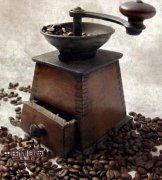The formulation of single mixed coffee and coffee beans

The mixed coffee mentioned here is a single coffee (pure coffee). As the name suggests, blended coffee is coffee made by combining several different coffee beans. This process of combining several different coffee beans is the blending process of integrated coffee.
The reason why we don't use the word blend here is because the blending process of mixed coffee is not a simple blend, which needs to be matched according to the different characteristics of different coffees. This is because the taste sought by the integrated coffee is not as distinct as that of a single variety of coffee, but rich, balanced and long-lasting taste. This requires analysis of the characteristics of different varieties of coffee, performance in the cup, but also according to the characteristics of the coffee beans themselves plus the taste performance after roasting to mix, so that too obvious characteristics are neutralized, will be as rich as possible taste performance.
For example, classic Javanese mocha coffee is a blend of coffee.
Here are two once-popular matching theories.
The first theory is to divide coffee beans into several different types, such as strong personality types, mild smooth types, suitable for blending base types, and so on, according to different coffee types. Such a blending method requires an accurate understanding of the type of blended coffee beans used, as well as a fairly familiar grasp of the cup performance of each coffee, on this basis to determine the proportion of various coffee beans in the blending.
Another theory is that blending is based on how different coffees behave in cups with different degrees of roasting. No matter what type of coffee it belongs to, it has different flavor performance under different roasting degrees, and even the strong personality coffee will greatly reduce the strong personality at the deeper roasting degree, while the mild coffee with the least personality will show its less obvious personality characteristics at the lighter roasting degree. It is under this understanding and understanding that blending according to different baking degrees is carried out. However, this also has high requirements for the accumulation of roasting knowledge, and its roasting technology is more skilled in order to mix a good comprehensive coffee.
Both theories have their reasons, but they also have their limitations. The first stubbornly divides coffee into different types, ignoring the coffee flavor performance under different roasting degrees, while the second does not consider that each coffee has its best roasting degree to achieve its own characteristics.
Blending is not a simple addition and subtraction process. Blending requires the barista to have a correct understanding of the characteristics of each coffee and at which roasting degree the flavor performs best. On this basis, through continuous blending experiments, we can slowly find the most suitable blending formula. But it should be said that there is no fixed criterion for what proportion of A coffee must be mixed with what proportion of B coffee and C coffee to make the best blend coffee.
The blending of synthetic coffee is an art in itself, and art needs freedom. In the following article, we will introduce several good matching options for you. (This article is reproduced)
Important Notice :
前街咖啡 FrontStreet Coffee has moved to new addredd:
FrontStreet Coffee Address: 315,Donghua East Road,GuangZhou
Tel:020 38364473
- Prev

The nutritional efficacy of coffee beans
Coffee is beneficial to urine and dehumidification. Caffeine can promote kidney function, expel excess sodium ions from the body, increase urine output, improve abdominal distension and edema, and help lose weight. Coffee is a staple appetizer. Caffeine stimulates the sympathetic nerve, stimulates stomach and intestines to secrete gastric acid, promotes evolution, prevents gastric distension and gastroptosis, and promotes gastrointestinal hormones and peristaltic hormones to facilitate rapid defecation. The beauty of coffee
- Next

Common sense of individual coffee and blended coffee beans
A single product refers to coffee beans of a single variety, a single origin or a single roasting degree. Blending refers to coffee beans of different varieties, different producing areas or / and different roasting degrees, which are mixed together according to the established concept. At the beginning of love, you may be attracted by a certain trait of the opposite sex, or beautiful or pure or wayward, you plunge into the paradise of love. But when we talk about love, we split up.
Related
- Detailed explanation of Jadeite planting Land in Panamanian Jadeite Manor introduction to the grading system of Jadeite competitive bidding, Red bid, Green bid and Rose Summer
- Story of Coffee planting in Brenka region of Costa Rica Stonehenge Manor anaerobic heavy honey treatment of flavor mouth
- What's on the barrel of Blue Mountain Coffee beans?
- Can American coffee also pull flowers? How to use hot American style to pull out a good-looking pattern?
- Can you make a cold extract with coffee beans? What is the right proportion for cold-extracted coffee formula?
- Indonesian PWN Gold Mandrine Coffee Origin Features Flavor How to Chong? Mandolin coffee is American.
- A brief introduction to the flavor characteristics of Brazilian yellow bourbon coffee beans
- What is the effect of different water quality on the flavor of cold-extracted coffee? What kind of water is best for brewing coffee?
- Why do you think of Rose Summer whenever you mention Panamanian coffee?
- Introduction to the characteristics of authentic blue mountain coffee bean producing areas? What is the CIB Coffee Authority in Jamaica?

